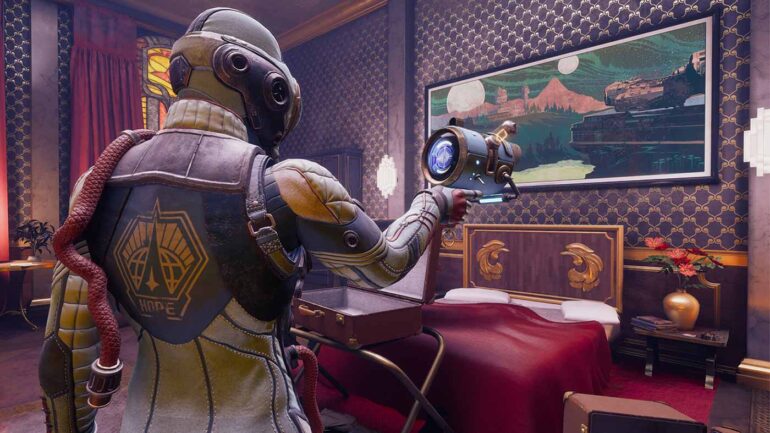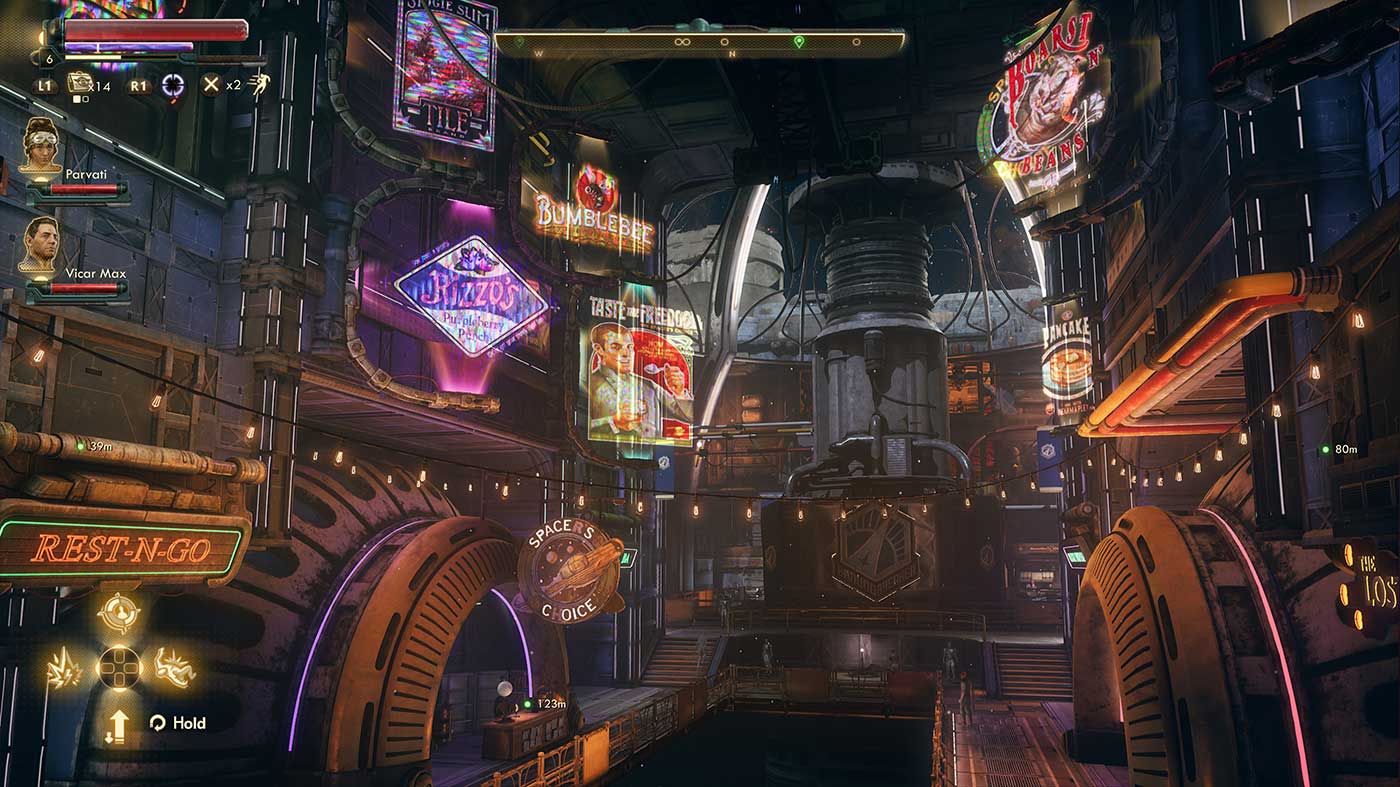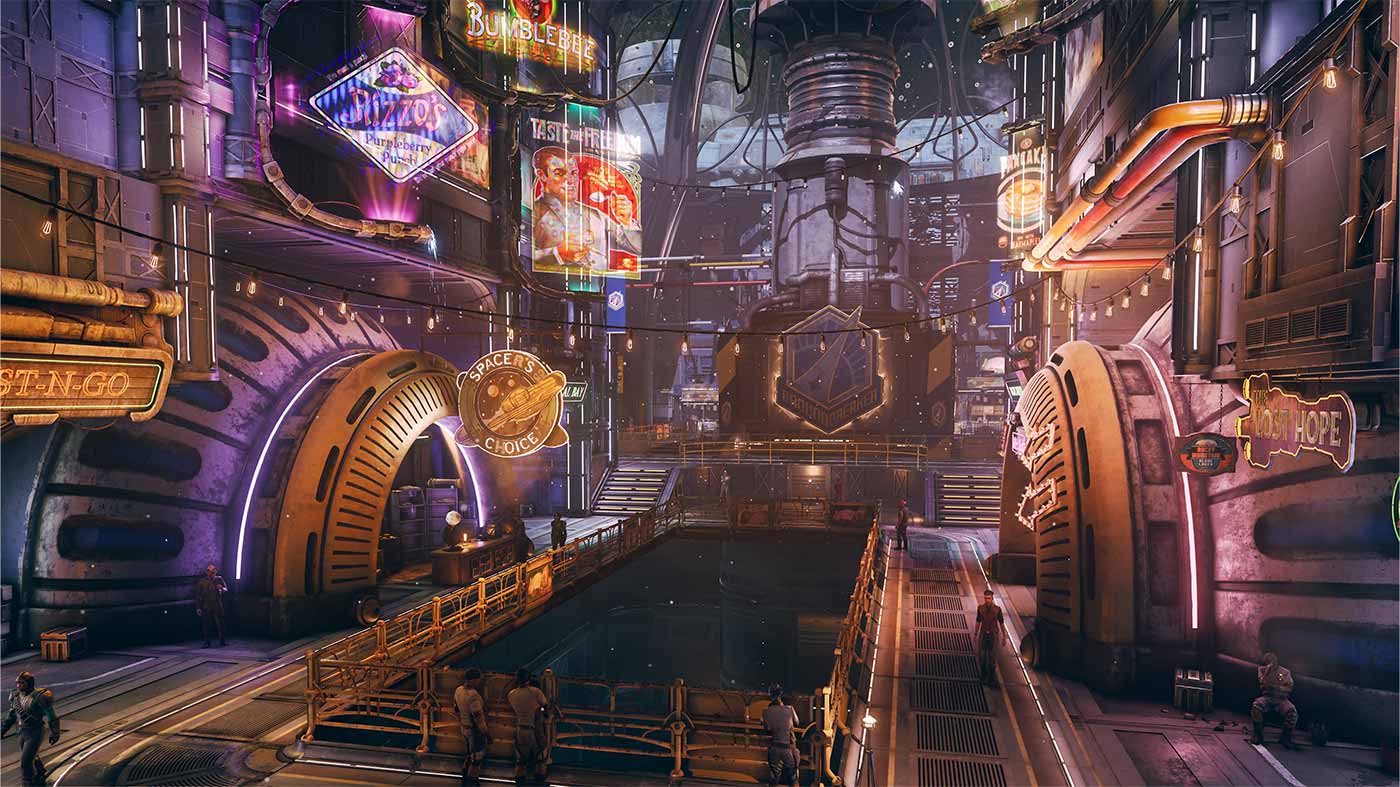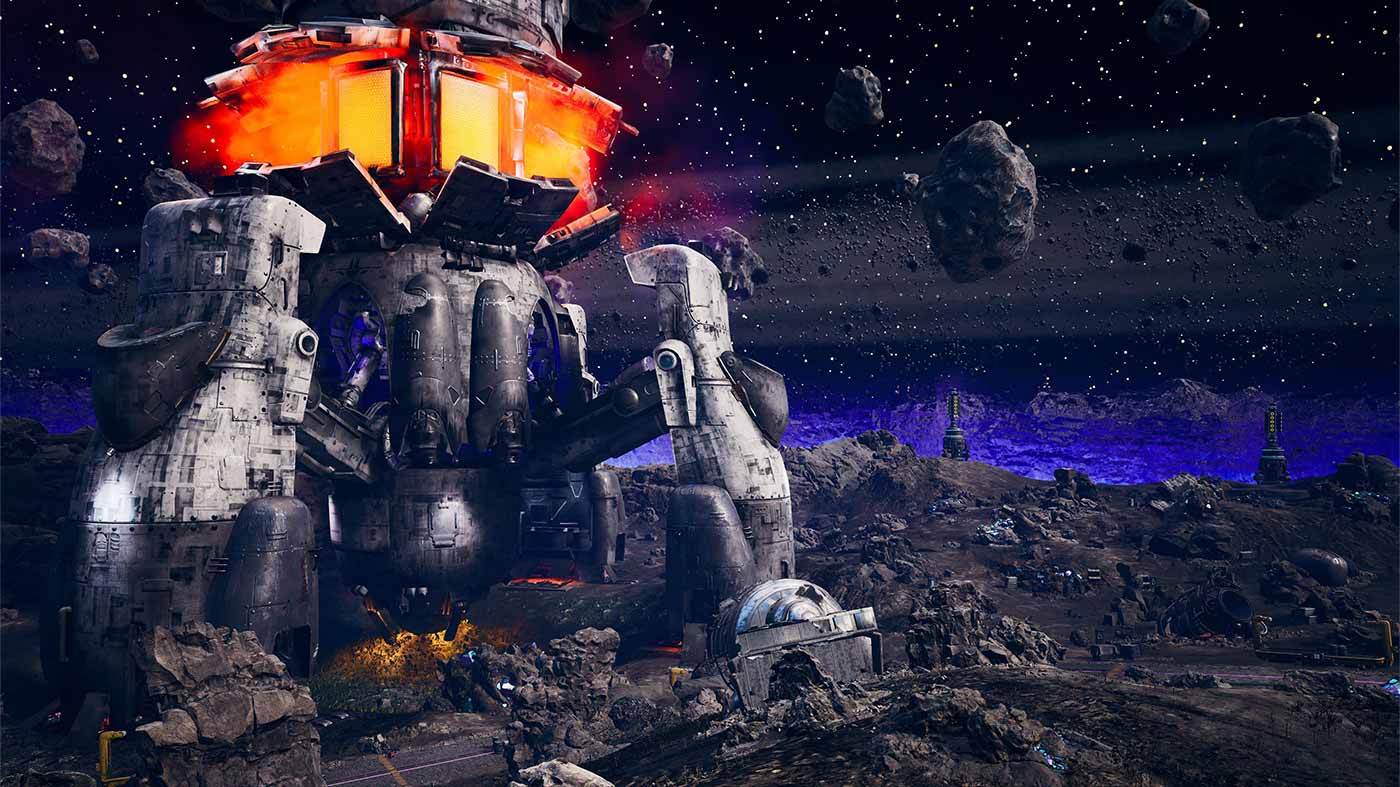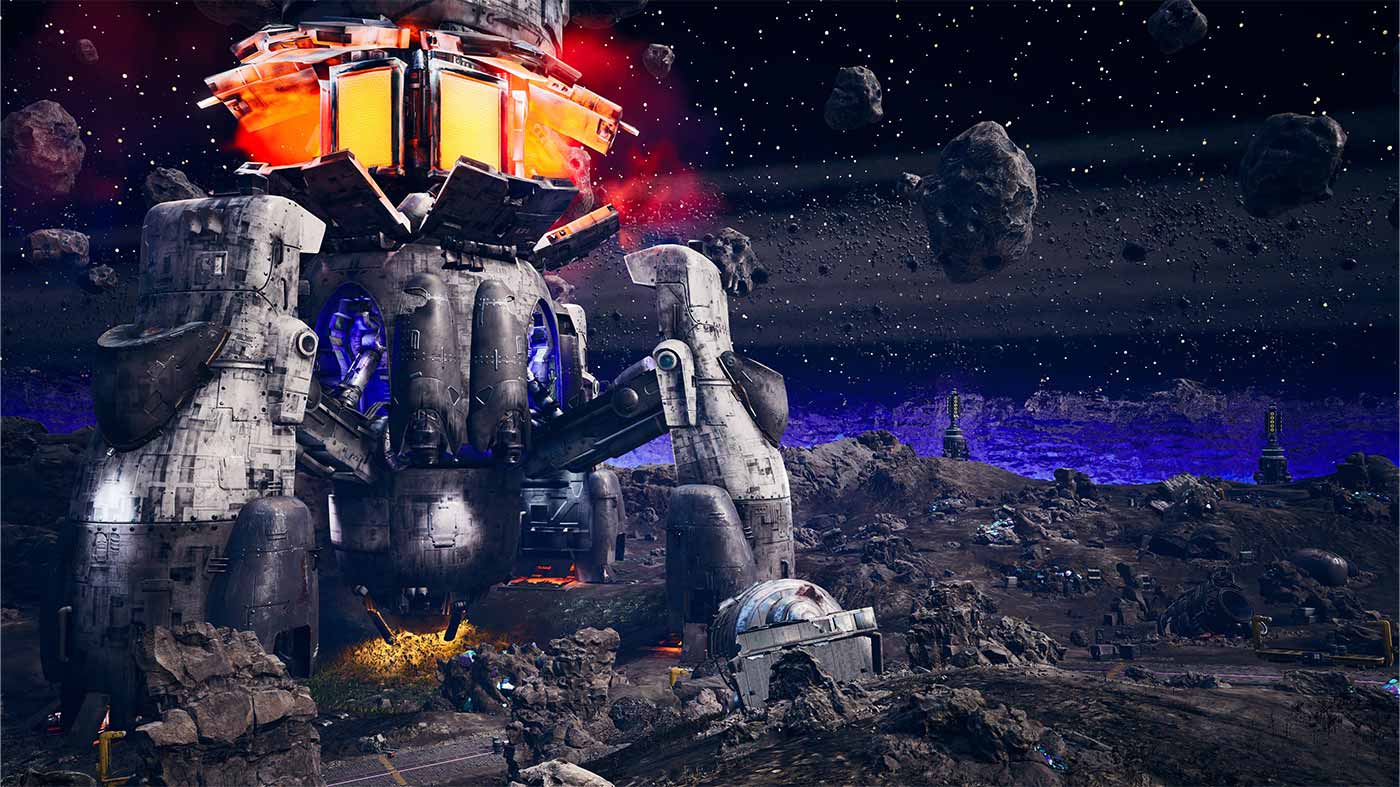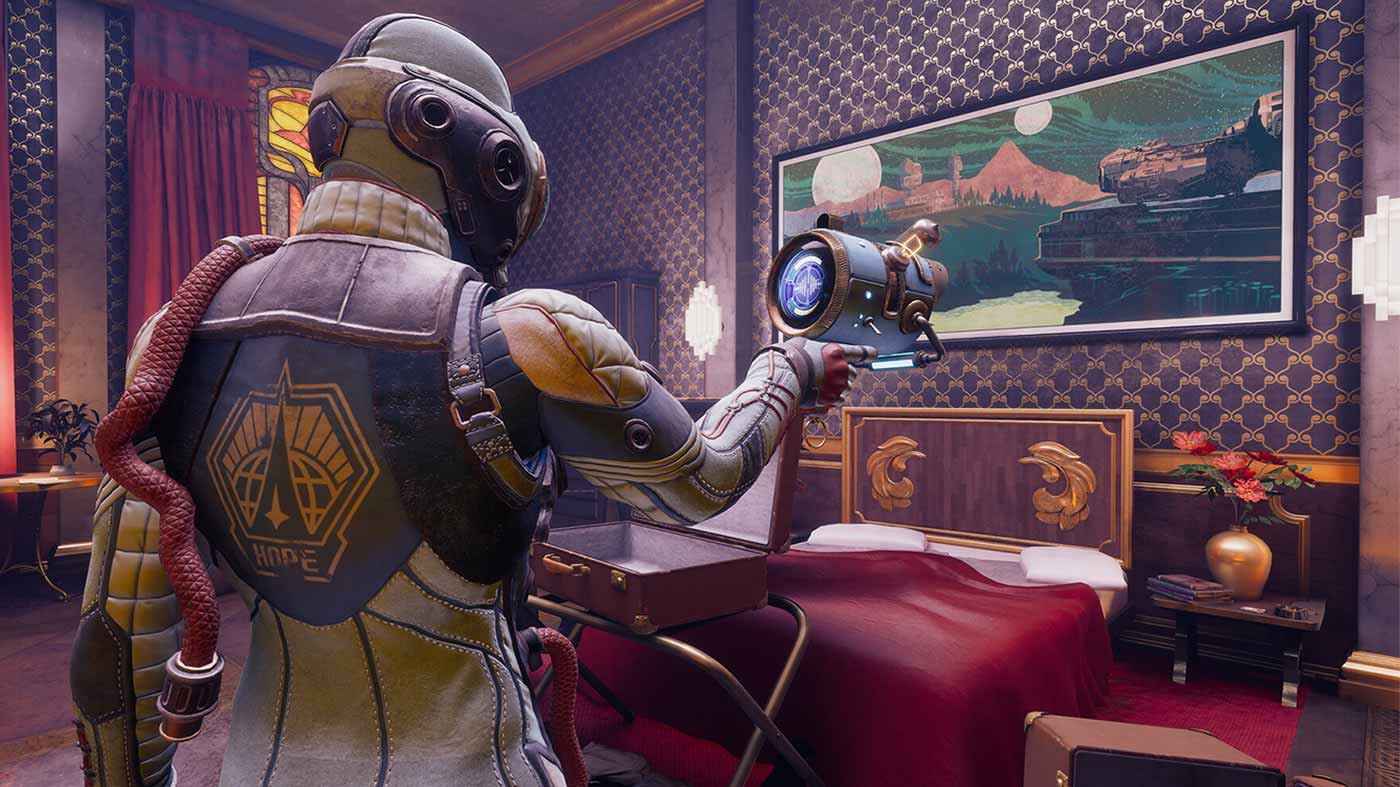The Outer Worlds was one of my favourite RPGs of the last generation, with Obsidian Entertainment playing to the strengths it proved in the fan-favourite Fallout: New Vegas and producing a succinct sci-fi romp with fantastic characters, a dense and detailed world and some hilarious writing.
Now, the game is back and jazzed up for both the PS5 and Xbox Series X|S platforms as well as PCs rocking more modern hardware. I’ve spent the last few days checking out the PS5 version specifically, after having originally reviewed the game and completed a couple of playthroughs on the PS4 where it certainly felt hamstrung by the comparatively meagre console hardware.
Free of last-gen confinement, the new Spacer’s Choice Edition of the game offers improved visuals, some slight gameplay tweaks, PS5-specific DualSense features and a complete content package with both previously-release DLC expansions.
PS4 (left) vs PS5 (right)
Naturally the most immediate difference in the new-gen version of the game is the visuals, which benefit from changes both big and small. The game’s sweeping, planetary environments look much more detailed and lush thanks to upgraded assets, better draw distances and an improved lighting model. A lot of characters and objects aren’t obviously improved until you compare them side-by-side with the last-gen versions of the games but they do sport some improved animation work in places. The game’s overall look is significantly nicer than before, and it all goes a long way to selling the incredible art direction that’s always been there.
Unfortunately, while it looks great performance is a bit weird (at least on console). There are two modes with a graphics-focused option offering a sharper image with noticeably better lighting and particle effects, as well as a performance option that dials things down slightly in favour of a higher framerate. I was expecting the performance setting to be leaning toward a locked 60fps given the age of the game and the power of the new machines but it seems to really struggle, instead wavering wildly and introducing some distracting stutter. While I’d normally be happy to take a bit of a visual hit and stick with the higher framerate option I’d actually almost recommend going the other way with this one and taking the nicer visuals – it’s a game that plays just fine at 30fps anyway.
PS5 Performance Mode (left) vs Graphics Mode (right)
One big performance benefit comes by way of the load times, which are far from instant here but still a huge reduction over the original’s frustratingly lengthy load screens on console.
As far as gameplay goes, this is pretty much still The Outer Worlds you know and love, although Obsidian does promise some small tweaks like an increased level cap, which should make coming back for a new playthrough at least a little more interesting, and improved companion and enemy AI – something I’m inclined to believe is a thing but is hard to realistically gauge after having not played the original in a while. Of course, both DLC expansions are included in Peril on Gorgon and Murder on Eridanos, which are both fine additions to the game. The addition of support for haptic feedback and adaptive triggers on PS5 is definitely welcome, with the game’s already-great selection of interesting and fun sci-fi weapons all feeling that much more distinct here.
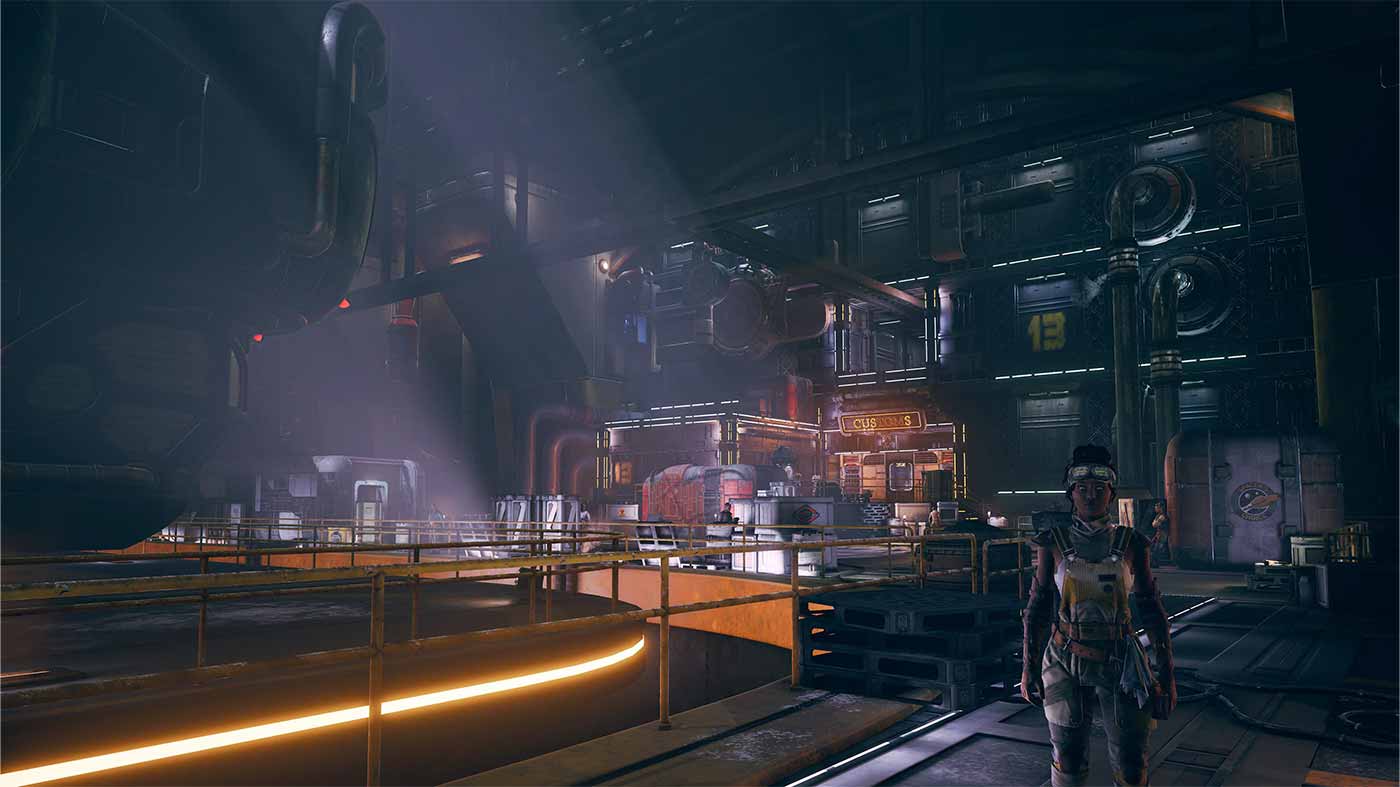
The thing that makes or breaks the value proposition with The Outer Worlds: Spacer’s Choice Edition really is the way it’s being offered. If you’re brand new to the game and don’t own it on any platform, it’s around $90 AUD for this updated version including the expansions, which in my eyes isn’t too bad for what you’re getting. If you already own the game and not the extra DLC however, you’ll also still be up for the full ninety bucks, which kinda stings. Lastly, anyone who does own the base game and both expansions is eligible for a $12 paid upgrade. There’s probably a lot to argue around the value of these new-gen upgrades and the mechanics of how they’re implemented but I can’t help but feel this isn’t going to be ideal for a lot of prospective players.
There’s also no save transfer from the old version to this new one, which is a bit of a bummer.
At the end of the day, The Outer Worlds is still an excellent RPG that I’d highly recommend to fans of slightly-camp sci-fi adventures or most of Bethesda and Bioware’s catalogue. This new iteration isn’t perfect, but it’s both a great jumping-in point and a nice little upgrade for fans who don’t mind splashing a little cash to replay it in improved form.
If you’re yet to experience The Outer Worlds for yourself and you’re keen to know more, you can read my original review of the game (played on PS4) right here:
Picture this: you’re one out of tens of thousands of interplanetary colonists on The Hope, an enormous space station bound for a shiny new, corporate-owned colony in space. The trip is supposed to take ten long years, with the entire population in cryogenic sleep. Something goes awry though, and The Hope is stuck out in space for closer to seventy, at which point waking any human up from cryosleep would result in ‘explosive cell death’. A scientist by the name of Phineas Welles manages to science-up a chemical concoction to revive just one colonist though – you. You quickly learn that the corporate-owned Halcyon Colony hasn’t quite panned out the way it should’ve, with at least one planet already all but abandoned, and the divide between the powerful and the poor at its most extreme. Plus, the reasons for The Hope never making its destination are murky at best and sinister at worst. What would you do?
That’s the question that The Outer Worlds asks, but the answer is entirely up to you. I mean it when I say that, too. Keen to save your people and tear down the systematic oppression that the Halcyon Holdings Corporation is using to live in luxury at the cost of the colony? Sounds great. More concerned with taking advantage of the state of the colony and rising to power than helping revive the people on The Hope? Fuck those people. You do you. One of the reasons this all works so well is The Outer Worlds’ absolutely stellar (pun intended) writing. From the sheer enormity of incidental detail and pages upon pages of descriptive text contributing to the overall worldbuilding, to the superbly fleshed-out characters, it’s clear that a lot of love was poured into crafting the Halcyon Colony. There’s also some really welcome representation for sorely underrepresented groups in the game that comes across as genuine and meaningful, which is really nice to see. Above all, the game is gut-bustingly funny, to the point where I’d call this one of the all-time greatest examples of how comedy can really work in games.
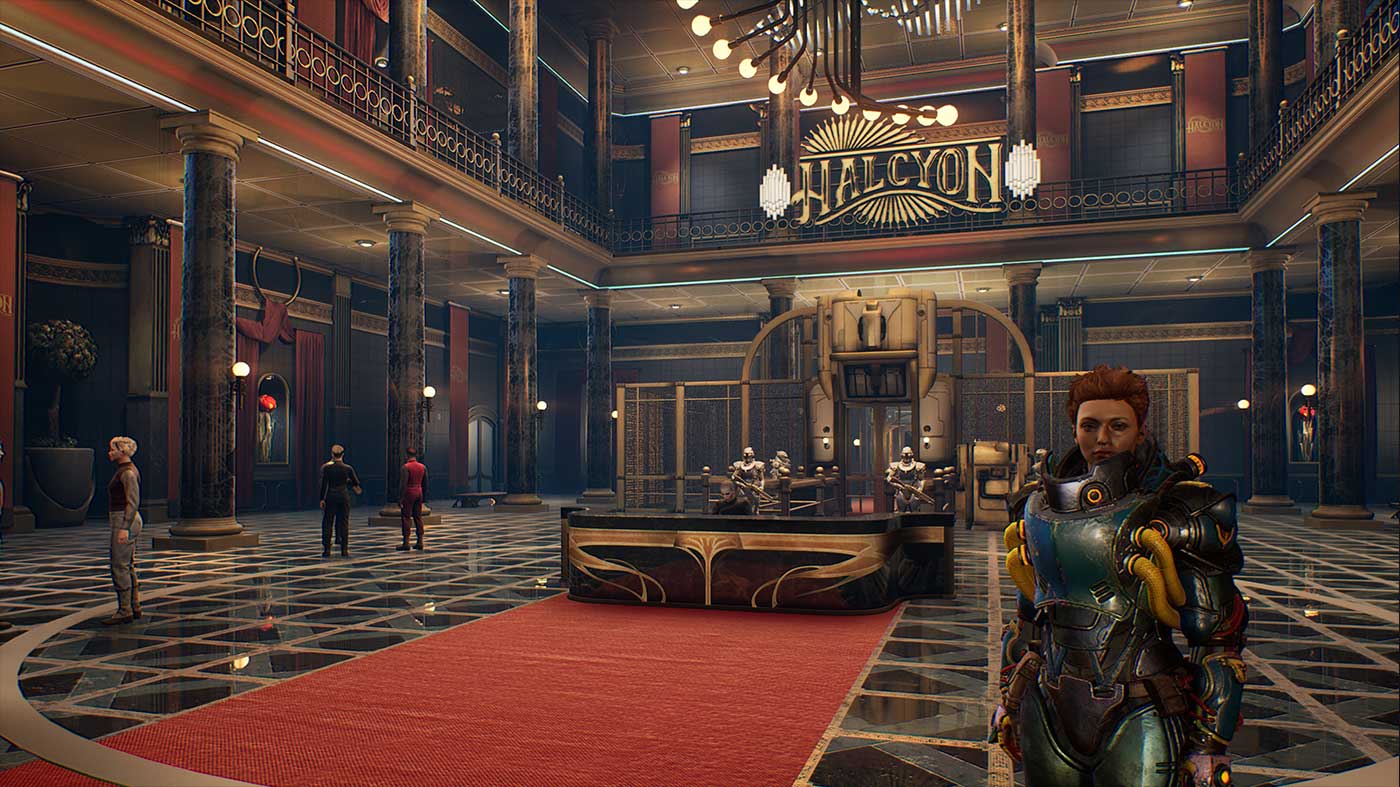
Your immense influence on the narrative is impressive, as is the way that every quandary is less a simple moral choice than a considered and calculated maneuver. Obsidian have truly kept the ‘Role Playing’ in RPG alive in The Outer Worlds, and the way the story plays out from the grand scale to every small detail is entirely in your hands. At face value, the core mission and plot at the heart of the game is quite simple, but there’s a complex world full of equally complex systems to allow players to determine for themselves their role in the whole thing. Put in the hard work and you might start to see that the ‘bad guys’ aren’t always who you think they are, and sometimes you just have to kiss the corporate ring to get to where you need to be.
The other side of all this role-playing goodness is deep, robust and surprisingly approachable RPG progression. Everything your character does (or is able to do) in the Halcyon Colony is underpinned by their skills. Every time your character levels up they earn ten points to spend across seven skill groups, each with two or three subsets of skills. It’s mostly traditional RPG-type stuff like weapon proficiencies, sneaking and hacking, medicine, science and so on. The skills affect everything from your effectiveness in combat to the options available to you in conversations and the way in which you’re able to interact with the world. That might all seem pretty traditional as far as these types of games go, but The Outer Worlds does such a fantastic job of providing players with options upon options for how they approach each and every moment that where you put your points has a marked and tangible effect on every facet of your character’s journey.
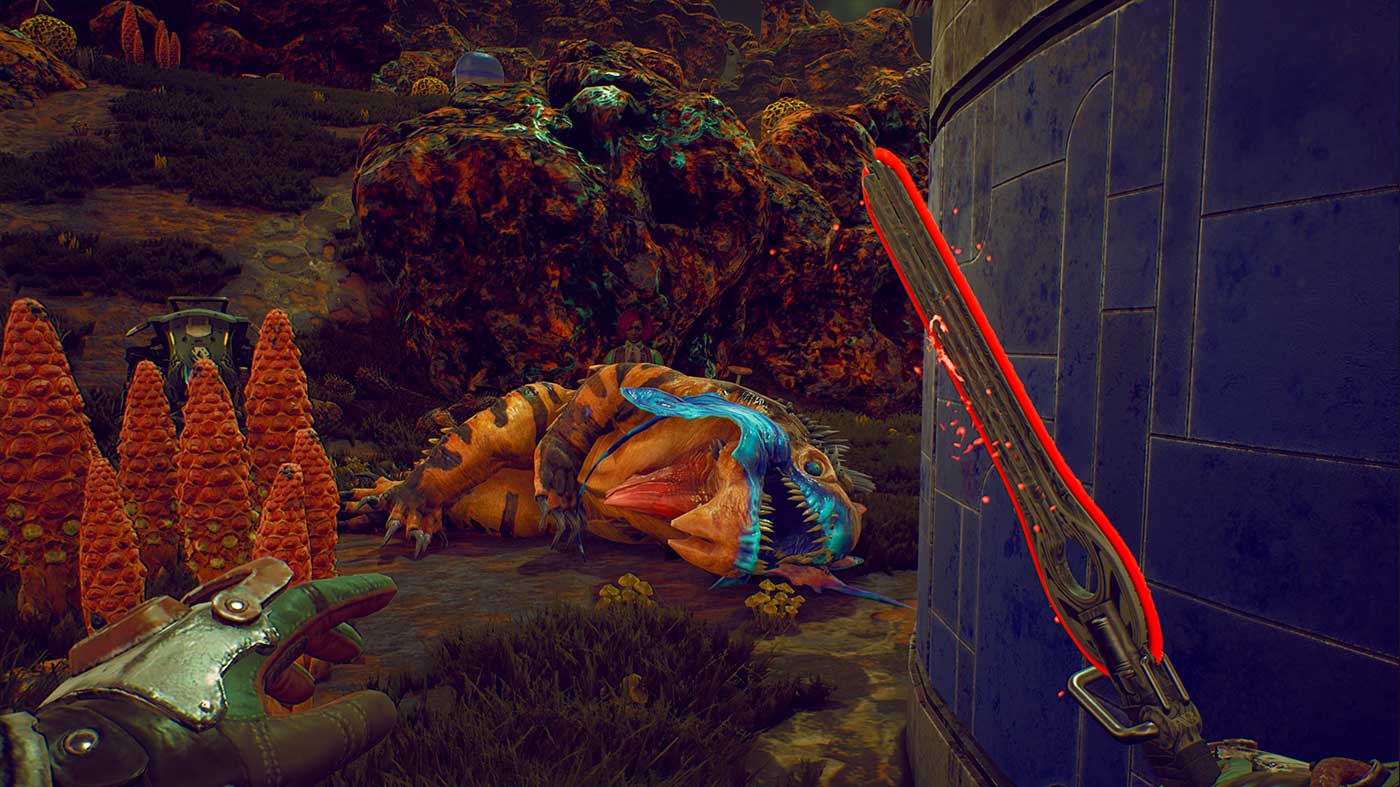
One quick example of how this works in practice would be one of the many times that I found I needed access to a restricted area. The easiest way to traipse through off-limits places is to use your handy Holographic Shroud to disguise yourself as someone who is supposed to be there. Usually this is done by procuring a relevant ID, and so in this case I knew I could get one from a certain character. Trouble was, my character’s dialogue skills weren’t quite where they needed to be to convince this person to just part with their ID. My next best option would have been to just steal it from them, but my sneaking and lockpicking skills were also too low to get into their stash (and without them seeing) thanks to my oversized armour with its -5 sneak penalty. The solution? Go back to my ship, respec my skills to put more into lockpicking, strip (almost) naked, go back and break into the person’s place, steal their ID and be on my merry way. This one situation could have played out so many ways depending on my character’s build and how I, the player, wanted to approach it though. The way that character skills and playstyles gel together in The Outer Worlds is extremely satisfying and makes for some great emergent storytelling.
During this one encounter is also where my character picked up their first Flaw; an optional, permanent hit to a predetermined skill in return for an extra Perk point. In this case, the Flaw I was offered was ‘Paranoia’, a result of my being caught one too many times sneaking around restricted areas (although I always managed to talk my way out). Flaws are a lot of fun, taking your existing gameplay habits and offering you a chance to better yourself in spite of them. Fall off of stuff a lot? Being harshly debuffed when close to edges means you won’t get so close to them in future. Developed a fear of Raptidons from being mauled by them too often? Maybe now you’ll stop bothering them out in the wilderness. Okay, you probably won’t but you get the idea.
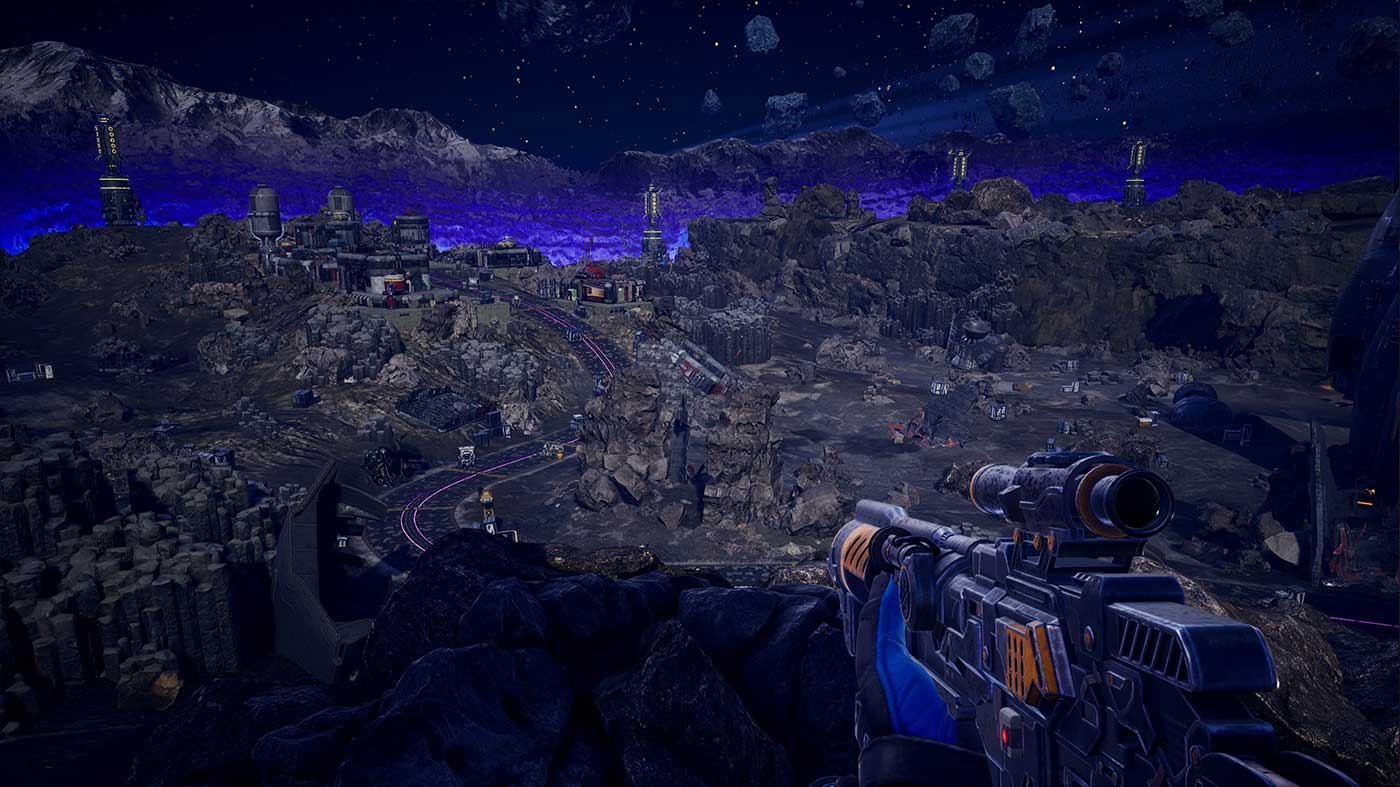
Companions are another big factor into how players’ individual stories will wind up being told. There are six of them in total, although it’s entirely possible to play through the game without ever letting any of them join your crew (good luck playing that way, though). Aside from helping you out in battle, each of these characters brings with them a rich backstory and their own personal quests to assist them in. These quests often mesh with existing storylines, and your companions will regularly interject in conversations with NPCs that are relevant to them, so the simple act of letting someone tag along on your adventures has a real effect on your experience. It’s also fun to experiment with different pairings of characters to see how they interact with each other. At one point I took a new companion out with myself and my favourite, Vicar Max, and we got exactly five minutes into exploring before she asked to call him ‘Vicky’ and he told her “Absolutely fucking not.”
While you could, with great difficulty, complete the entire game without ever taking another life – chances are that you’ll spend a decent chunk of your time in The Outer Worlds engaged in combat. For me, this is probably the game’s weakest area. Not that the combat is bad by any stretch, just that it doesn’t feel quite as fully realised as everything else. What’s there is solid; the shooting feels nice enough, the enemies (especially the awesome-looking alien creatures) are fun to fight and the companions are super helpful in a pinch. It wasn’t long before every fight started to feel the same though. Part of that can probably be attributed to my very basic, ‘tank-y’ character build, but this is also a relatively small world with few enemy types, whose AI patterns usually just boil down to rushing the player. There are a few awesome wrinkles to combat though; like Tactical Time Dilation, which lets you slow down the action and target specific enemy parts for crippling effects (think V.A.T.S., but with live aim).

This is without even going into the myriad options available when it comes to weapons, armour and other neat gear, but this is all Serious RPG Stuff™ that I’m not about to bore anyone with but RPG nerds will absolutely love. There are (mostly minor) gripes to be had though, starting with an occasionally clunky interface; especially the way item description boxes pop up over other items while you’re sorting through them. The ammo system can also be quite inconvenient – breaking weapons up into just three ammo categories means even if I spend the whole game armed with a wide spread of weapon types, they could all be pulling from the ‘heavy’ ammo category, leaving me with not enough of that and an abundance of ‘light’ and ‘energy’ ammo that I’ll never use.
One clear distinction from other, similar games that The Outer Worlds makes for itself is that it’s vibrant as hell. Obsidian weren’t afraid to give their world some actual colour, and the game is all the better for it. It borders on garish at times, but that’s just part of its charm. It really sells the satirical nature of the world, and also helps make the environment easy to read. Characters are equally creative and outlandish in their design, and look great in up-close conversation. They’re almost all voiced fantastically, too, with some notable names like Ashley Burch and Crispin Freeman among the very capable cast. The only real issues I had with the game’s presentation were the very noticeable texture pop-in that occurs when entering new areas and the annoying load screens when entering or exiting towns, larger buildings and the interior of the player’s ship, but those certainly aren’t deal-breakers.


